How Ashton Hagans' decision to return affected Tyrese Maxey

Ashton Hagans is a complicated basketball player, but a disclaimer first: He deserves to be beloved. Dude left e-v-e-r-y-thing on the court and is the best defensive guard to pass through Kentucky in my lifetime.
He also exits for the NBA in a world currently befouled by a pandemic. But despite COVID-19, Hagans’ NBA stock was never all that high. He’s not a three-point threat and struggled to finish. That’s usually a thumb-across-the-neck for hopeful NBA point guards, but most point guards aren’t defensive demigods like Hagans.
He didn’t improve his stock much if any in 2020 and spent another year in college wading water on the big boards, although Hagans’ game did take quite a leap between seasons in college. Financially, Efrem Montgomery would tell Hagans that he “wasted” a year by coming back. There’s some legitimacy to that, honestly.
With the 2020 Wildcats, Hagans wasn’t a snug fit with the personnel Kentucky had coming in for the season, mainly on offense. Although he remained the ultimate perimeter fulcrum on defense, UK had Maxey coming in — who I thought would be a Jamal Murray-like scorer — and Quickley returning to set the table as a true point guard a la Tyler Ulis to complete the allegory to 2016. And three-point gunners Johnny Juzang and Jemarl Baker would come off the bench. That was my vision for the guards: a slick offensive group that should knock down nearly 40% of their threes.
But Hagans ended up being a foil to that style of play. Yes, he’s an A++ defender, a lucid passer, and dominates basketball games without scoring. In theory, he meets all the criteria as the perfect fit next to two scoring-oriented guards, but he wasn’t.
All three of Kentucky’s starting guards were 6’3″ and all came out of high school as point guards, accustomed to handling the ball most of the time and not really having to share (which has become its own pandemic in high school hoops). After a year of grooming in 2019, Quickley was spectacular by this past season’s end. Hagans struggled to play next to two other perimeter ball handlers when in 2019 he was the main focus. And Maxey felt the brunt; always second fiddle to two older guards and never able to get fully in rhythm with the rest of the team.
Maxey is the tragedy for Kentucky in 2020. He could have netted 18 to 20 points per game in a style that nearly mirrored Jamal Murray’s. Quickley and Richards scored more often and accurately than Maxey, but with a full leash, I think the kid takes the team over with a string of Michigan State-esque performances in SEC play. Instead, he played out of position all year as the third point guard, hurting his defensive numbers (dude is still tough on that end) and hemming his offensive versatility.
That may be the tragedy: we knew his ceiling from game one. He scorched the nearly-unanimous preseason No. 1 team for 27 points and a 30-foot silencer with under a minute to go! In his inaugural collegiate contest, in The Garden no less, Maxey pulverized Tom Izzo’s projected best team in two decades, taking preseason POY Cassius Winston’s head with him.
After that, in hindsight, perhaps John Calipari should have gradually shifted some of Hagans’ point guard duties to Maxey, the better shooter, better finisher, and dynamite athlete (Maxey also shot an insane 65% on close twos compared to Quickley’s 48% and Hagans’ 54%, per Bart Tovrik).
Yet Kentucky stuck with Hagans as the epicenter of the offense. Usually, a defensive-minded point guard that averages six assists is the rudder of your basketball team. Instead, it was the emergence of Richards and Quickley in SEC play that sparked the offense.
Frankly, that isn’t all Hagans’ fault; several guys took a while to get going this year. Kentucky could have used more ball handling possessions for Maxey and fewer for Hagans. But hey, maybe this goes on Maxey’s shoulders, too. He could have asserted himself a little bit more when Hagans was struggling.
Who knows, if Hagans departs after his freshman season, we could assume Jemarl Baker — who was reliable for Arizona this year — has a higher chance of staying and would bolster the putrid outside shooting. Also, Johnny Juzang and Kahlil Whitney probably get a little more run, and while Whitney’s inner circle is whacky, maybe Juzang stays for 2021 and, well, funnily enough, creates the same overpopulation problem we had this season — just with 6’6″ wings instead of 6’3″ point guards.
I felt during the preseason last year that Kentucky had a shot to win the whole thing based solely on Maxey and his combination of speed and athleticism combined with that Jamal Murray scoring profile. Instead, he was the third amigo, the Martin Short to Chevy Chase and Steve Martin, and I found myself less enthused with our postseason prospects. Quickley’s a steady scorer and elite shooter but it’s hard to imagine he had the one-on-one scoring arsenal needed to lead a team to the Final Four without someone else matching his production.
Maxey had that potential, though, and Hagans’ decision to return hampered Maxey’s ceiling at Kentucky and Kentucky’s overall ceiling in 2020.
UK rarely had offensive rhythm, but with Maxey and Quickley alternating possessions with more shooters opening up the court, there could have been an offensive identity come March. It would have worked out better than the contested-two-pointer roulette.
I feel for Hagans, especially with how his career ended. Hagans was genuinely my favorite player on this year’s team and watching him play defense is one of the great joys of my life. His defensive instincts and thieving hands belong on the Kentucky Basketball Frankenstein.
I’d also still contend Ashton Hagans was Kentucky’s most important/valuable player. He was THE leader. He held everyone accountable (remember his “wake the F up” roar at Keldon Johnson in 2019 at Auburn?) and led on the court with brute physicality, selfless (albeit sometimes strange) decision-making, and a desperation to win. He’s got some of that Jordan attitude in him–licks his lips and claps his hands when he smells competition. And this is stuff you can’t measure, the off-the-court leadership and culture-setting attitude Ashton Hagans used to reign his group of Cats. Maxey, for all his acrobatic scoring sizzle, wasn’t that guy for Kentucky.
So I thought I’d leave you with my favorite play from Hagans: his pick-pocket on Davide Moretti on the final possession of the Texas Tech game. A game-saving play, literally, and only moments after arguably a more impressive play: when he morphed into Trevard Lindley to break up an alley-oop attempt. It was arguably the best defensive play by a ‘Cat since Nerlens Noel stuffed a dunking Ole Miss center at the rim with four fouls and the game on the line in 2013:
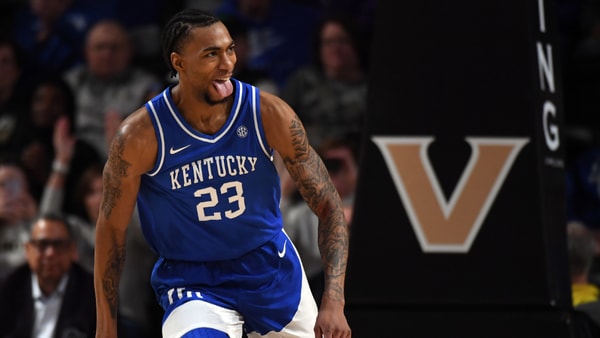
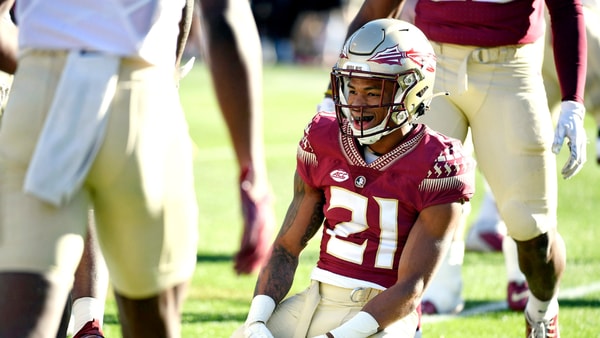
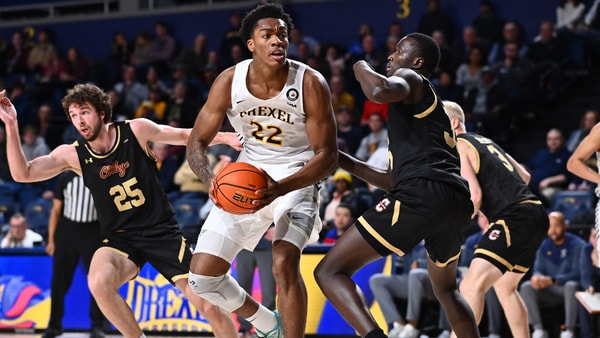
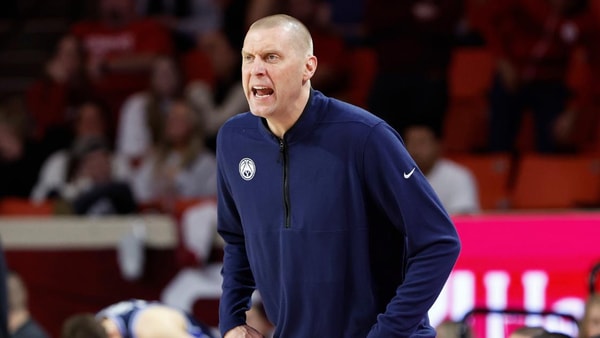
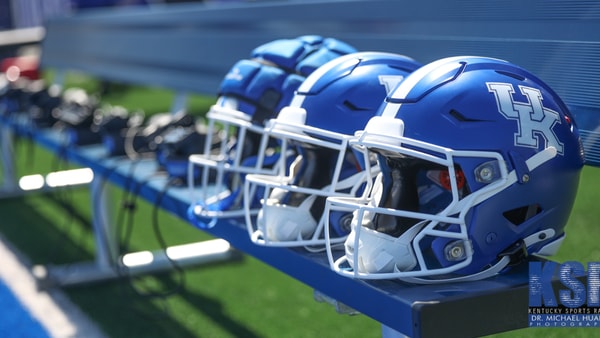
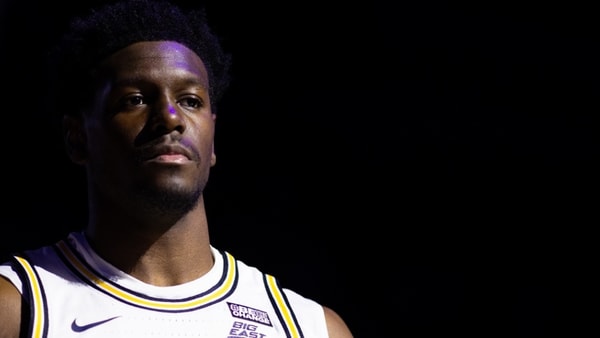
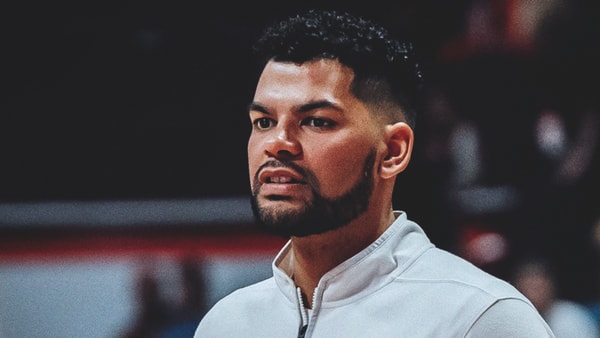
Discuss This Article
Comments have moved.
Join the conversation and talk about this article and all things Kentucky Sports in the new KSR Message Board.
KSBoard